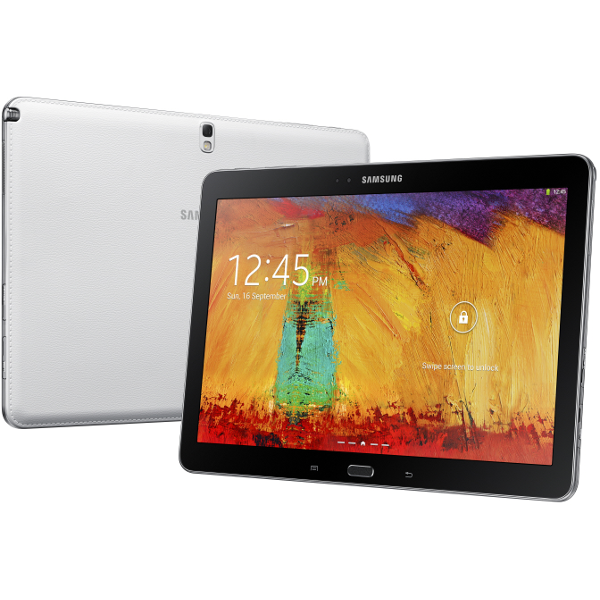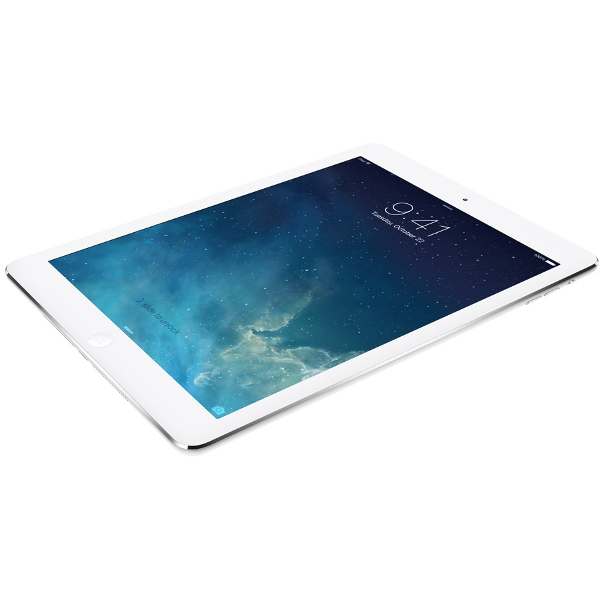Samsung Galaxy Note 10.1 (2014 Edition) Review: Wi-Fi Vs. LTE
Today's review of Samsung's Galaxy Note 10.1 (2014 Edition) includes the LTE-capable and Wi-Fi-only tablets, allowing us to compare Samsung's own Exynos 5 Octa platform to Qualcomm's Snapdragon 800. Can either configuration usurp Apple's iPad Air?
Why you can trust Tom's Hardware
Benchmark Suite And Test System Specs
Benchmark Suite
Our current Android test line-up comprises six key sections: CPU, GPU, GPGPU, Web, Display, and Battery.
| CPU | AnTuTu X, Basemark OS II Full, Geekbench 3 Pro, MobileXPRT 2013 |
|---|---|
| GPU | 3DMark, Anomaly 2 Benchmark, Basemark X 1.1 Full, GFXBench 3.0 Corporate |
| GPGPU | CompuBenchRS |
| Web | Browsermark 2.0, JSBench, Peacekeeper 2.0, WebXPRT 2013 |
| Display | Brightness (Min/Max), Black Level, Contrast Ratio, Gamma, Color Temperature, Color Gamut Volume (sRGB/AdobeRGB) |
| Battery | Basemark OS II Full, BatteryXPRT 2014, GFXBench 3.0 Corporate |
Test Methodology
All handsets are benchmarked on a fully updated copy of the device's stock software. The table below lists other common device settings that we standardize to before testing.
| Bluetooth | Off |
|---|---|
| Brightness | 200 nits |
| Cellular | SIM card removed |
| Display Mode | Device Default (nonadaptive) |
| Location Services | Off |
| Power | Battery |
| Sleep | Never (or longest possible interval) |
| Volume | Muted |
| Wi-Fi | On |
Comparison System Specs
Along with the duo of Galaxy Note 10.1 (2014) models, we have the iPad Air and EVGA Tegra Note 7 representing the latest SoCs from Apple and Nvidia. In addition, we have the Google Nexus 7 (2013) to provide a comparison point to the superpopular Qualcomm S4, which is used in far too many devices to mention.
The table below contains all the pertinent technical specifications for today's comparison units:
As in the PC space, the specs race is interesting to watch in the mobile market. Android's sketchy performance (particularly in older versions of the operating environment) spurred a considerable amount of demand for faster, more powerful SoCs, while Apple stayed relatively modest when it came to its own devices. We suspect that while the Android tablets boast much higher clock rates and core counts, the iPad will hold its own against many of the tablets in our benchmarks.
With the Note 10.1 (2014 Edition), we obviously get two flavors of the device: one with LTE connectivity (and Wi-Fi connectivity) and one with only Wi-Fi connectivity. However, this also entails two completely different SoCs: the Exynos 5 Octa from Samsung in the Wi-Fi version, and the Qualcomm Snapdragon 800 in the LTE version. Both versions function identically to the untrained eye, but the lab results will expose performance differences beyond connectivity.
Get Tom's Hardware's best news and in-depth reviews, straight to your inbox.
Current page: Benchmark Suite And Test System Specs
Prev Page Samsung's Galaxy Note Enhancements Next Page Results: CPU Core Benchmarks-
blackmagnum The only possible way Samsung mobile devices can be a worthwhile alternative to Apple is when they ditch the every-man Android and create their own tightly controlled/ managed OS like Apple. Do that and consumers might not feel like they're just buying the Samsung for the hardware.Reply -
Farrwalker On page 7. Results: CPU Core Benchmarks:Reply
Your bar graph "MobileXPRT 2013" seems to be in error.
For example, the text says, "Note 10.1 (2014 Edition) Wi-Fi leads with 300 points . . ."
but the bar is the shortest and indicates less than 150 points.
-
blueer03 You need to proofread this big time. From page 9:Reply
Samsung's Exynos-based Note 10.1 (2014 Edition) Wi-Fi holds its own against the Tegra Note 7, while the LTE version of the Note 10.1 (2014 Edition) again falls significantly behind its Snapdragon 800-powered Wi-Fi counterpart.
And this happens all throughout. The LTE is a Snapdragon, the Wifi is an Exynos. Keep repeating that to yourself as you re-write the descriptions and it will make this easier to read. -
Kevin Harrelson We got one of these for my son (age 13) to help with his school work. We got it from Best Buy and got the extended warranty. Both sound dumb, but it was actually a good move! The backlight has gone out on this thing TWICE. I happen to think that it is a lovely little tablet, but the backlight is a major reliability issue.Reply -
adamovera ReplyOn page 7. Results: CPU Core Benchmarks:
This benchmark's sub-tests produce scores in seconds (lower is better), and the overall score is given as a typical higher-is-better score, so the lowest bar indicates the fastest completion. Sorry about the confusion, I'll look into other ways to represent this test.
Your bar graph "MobileXPRT 2013" seems to be in error. For example, the text says, "Note 10.1 (2014 Edition) Wi-Fi leads with 300 points . . ." but the bar is the shortest and indicates less than 150 points.
-
adamovera ReplyYou need to proofread this big time. From page 9:
Good catch, thanks! Fixed.
Samsung's Exynos-based Note 10.1 (2014 Edition) Wi-Fi holds its own against the Tegra Note 7, while the LTE version of the Note 10.1 (2014 Edition) again falls significantly behind its Snapdragon 800-powered Wi-Fi counterpart.
And this happens all throughout. The LTE is a Snapdragon, the Wifi is an Exynos. Keep repeating that to yourself as you re-write the descriptions and it will make this easier to read. -
Tomtompiper The 2014 is almost 5 months old and has been superseded by the Amoled screened Galaxy Tab S 10.1 which wipes the floor with the opposition. http://www.gsmarena.com/samsung_galaxy_tab_s_105-review-1097.php Do try to keep up!Reply -
adamovera ReplyThe 2014 is almost 5 months old and has been superseded by the Amoled screened Galaxy Tab S 10.1 which wipes the floor with the opposition. http://www.gsmarena.com/samsung_galaxy_tab_s_105-review-1097.php Do try to keep up!
Actually, you'd think this has been phased out, but it's the current 10-inch Galaxy "Note" product, meaning it has the S Pen. The Galaxy "Tab" S does not - still unclear to me what makes the "S" stand out. I believe Samsung is literally attempting to offer an alternative product to every single other device in existence - complete mobile domination. I lost count of their current "Galaxy" line at 11 products, and that was awhile back.
The duo of Note 10.1 (2014)'s came in very handy both as comparison data in other articles and as testbeds for compiling our benchmark suite. Unfortunately, the article had to be pushed back several times, but the huge hardware difference between products carrying the same name was always something we wanted to illustrate, initially for the chipset-vs-chipset angle, but later for the optimization aspect as well. We're currently working through a small backlog of mobility articles, but each will be more timely than the last. My apologies. -
Blazer1985 I really wish Samsung could help the end user distinguish what they are buying. The 2 Note are classified as "LTE" and "WIFI ONLY" which sounds like 2 equal devices except for the sim card slot while they actually have a totally different soc.Reply -
vaughn2k ... and Samsung prices are now on par with Apple's. others are okay. Will wait for Asus and other competition. Should be cheaper though...Reply


